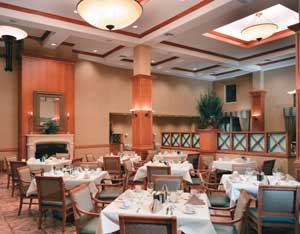Training that Works Recruiting and training good employees is one of the biggest challenges all operators deal with all the time, says Anderson. It’s hard to find qualified people because there aren’t a lot of places for people to get exposed to the product and services, explains Gust. “We need to find people who understand the service and health care aspect of the business and, frankly, love seniors.
“You are serving needs of 83-year olds who may come in relatively healthy, but as they age in place their needs change,” adds Gust. “ADL is not an easy service. It takes a lot of care and attention to detail,” a trait that many people don’t possess. Plus, considerably more staff is needed. “Management responsibilities as it relates to staffing are much greater in the senior housing arena,” says Kenny.
At a typical assisted living community, Shelter employs seven department heads who help supervise front line staff. The first two positions–an executive director and marketing director –are hired six months prior to the opening of a new community to ensure that these key people have time to become familiar with Shelter’s philosophy and operations procedures, as well as get plugged into the local community and enhance its pre-opening leasing.
In addition, hiring the executive director early gives the director time to hire and train the rest of the staff. Shelter prides itself on its multitiered training process–everyone, including partners, presidents, and vice presidents, gets involved. While Eckert is responsible for the majority of the training, she firmly believes that you can’t just have one person train new hires. Hence, each department head spends time at an operating property to observe and learn.
Demographic Demand
Unlike traditional multifamily housing, just knowing the demographics of your target population is not enough to guarantee success. Shelter also looks at the demographic trend of adult children, explains Phil Golden, president and COO of Shelter Properties and its Brightview Senior Living Division. One question to consider is, “Where do you put a senior property if adult children have a lot to say where the elderly live?” he explains.
Historically, most feasibility models focus on the eligible number of seniors in the market over a designated age–usually 72–with a certain income in assets and specific yearly income. Mistakes some developers make is assuming that because there is a certain number of seniors in a market, the project will be a success, which is not necessarily true. Owners need to look at adult children and figure out what might prompt them to bring their parents to their community. In the assisted iving and the independent living market, adult children make, or help make, the decision on where seniors will live. As a result, experienced senior housing providers market their assisted living communities to adult children.
Another aspect that developers need to take into consideration is whether potential residents can afford their communities. As people dwindle through their assets, the question arises, how do you keep them in your system longer, says Rosenblum. “We see people who are more financially sensitive than in the past. When their investments have gone down, but they’ve been with you for four to five years and spent $150,000, you need to find options,” he says. Sometimes Palace Management will move a resident into a smaller, more affordable apartment. Or, sometimes they will double up residents to help keep the costs down. In addition, if a resident’s needs warrant it, the company will help that person apply for Medicaid.
